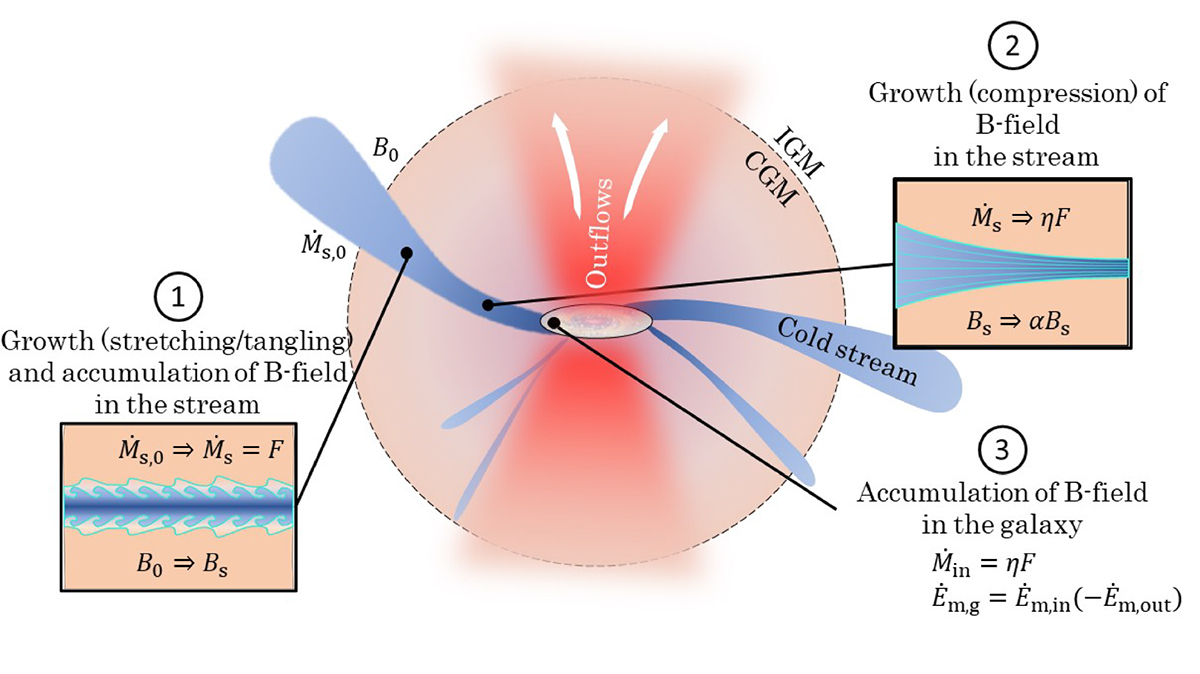Fig. 3.

Download original image
Illustrative sketch of the main processes of the model. The cold stream arrives initially from the intergalactic medium (IGM) with a mass flow rate Ms, 0 and a magnetic field B0 ∼ nG. Step 1: As the cold stream enters the halo, a mixing layer forms at the interface of the CGM and the stream. Magnetic field lines are tangled and stretched in the mixing layer, resulting in magnetic field amplification. Simultaneously, CGM gas in the mixing layer condenses onto the stream, accumulating magnetic fields. From the interaction of the stream and the CGM, the cold mass flux and the magnetic field of the stream become F and Bs. Step 2: Upon falling into the halo, the cold stream narrows and is squeezed by the dark matter potential. Consequently, magnetic fields in the stream are also compressed, further amplifying it by a factor α. The stream is also expected to entrain CGM gas while falling through the halo potential, increasing its mass flux by an efficiency factor η. Step 3: Ultimately, if the stream reaches the galaxy, it continuously accretes cold gas at a rate Ṁin with an associated magnetic energy inflow rate Ėm,in to the galaxy, elevating the galactic mean magnetic field. By default, we did not consider outflow; however, we introduced a simple outflow term in Appendix C.
Current usage metrics show cumulative count of Article Views (full-text article views including HTML views, PDF and ePub downloads, according to the available data) and Abstracts Views on Vision4Press platform.
Data correspond to usage on the plateform after 2015. The current usage metrics is available 48-96 hours after online publication and is updated daily on week days.
Initial download of the metrics may take a while.


